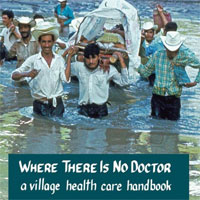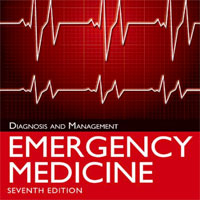Tag: diagnosis
Hydroxychloroquine With or Without Azithromycin
Among patients hospitalized with mild-to-moderate COVID-19, the use of hydroxychloroquine, alone or with azithromycin, did not improve clinical status at 15 days as compared with standard care. A total of 667 patients... read more
Bedside ECHO To Diagnose Native Valve Infective Endocarditis
Infective endocarditis (IE) is an important pathology to detect in the Emergency Department (ED), but the diagnosis is too often delayed or missed. IE ticks many boxes as a diagnosis we can "own" in Emergency Medicine (EM): 1.... read more
Right Heart Thrombus in Transit Diagnosed With Focused Cardiac Ultrasound
Pulmonary embolism (PE) is a potentially fatal entity that is frequently diagnosed in the emergency department (ED). Emergency physicians (EPs) routinely perform focused cardiac ultrasound (FOCUS) to support a prompt ED diagnosis... read more
High Breath-by-Breath Variability Is Associated With Extubation Failure in Children
High respiratory variability during spontaneous breathing trials is independently associated with extubation failure in children, with very high rates of extubation failure when these children develop postextubation upper... read more
Increase in Rare Brain Inflammation and Stroke Linked to COVID-19
Preliminary clinical data indicate that severe acute respiratory syndrome coronavirus 2 (SARS-CoV-2) infection is associated with neurological and neuropsychiatric illness. Responding to this, a weekly virtual coronavirus... read more
Biomarkers of Sepsis: Time for a Reappraisal
The precise roles of most biomarkers in the management of septic patients have not been well defined, and of the many biomarkers that have been studied, only a few have been evaluated in large or repeated studies. As... read more
Patients in Hospital with COVID-19 Using the ISARIC WHO Clinical Characterisation Protocol
ISARIC WHO CCP-UK is a large prospective cohort study of patients in hospital with covid-19. The study continues to enrol at the time of this report. In study participants, mortality was high, independent risk factors were... read more
High Risk of Thrombosis in Patients with Severe COVID-19
Despite anticoagulation, a high number of patients with ARDS secondary to COVID-19 developed life-threatening thrombotic complications. Higher anticoagulation targets than in usual critically ill patients should therefore... read more
New NICE Guidelines on VTE Management
In the midst of everything that is going on with COVID-19 it is easy to see how important non coronavirus stuff can get overlooked. But we still need to keep our eyes open. After a 3 year process involving many meetings,... read more
Prediction Models for Diagnosis and Prognosis of COVID-19 Infection
Prediction models for covid-19 are quickly entering the academic literature to support medical decision making at a time when they are urgently needed. This review indicates that proposed models are poorly reported, at high... read more
Surviving Sepsis Campaign Guidelines on the Management of Critically Ill Adults with COVID-19
The Surviving Sepsis Campaign COVID-19 panel issued several recommendations to help support healthcare workers caring for critically ill ICU patients with COVID-19. The novel severe acute respiratory syndrome coronavirus... read more
Where There Is No Doctor: A Village Health Care Handbook
This updated reprint features updated medication information, a newly revised family planning chapter, new treatments for a variety of infections, and more. All Hesperian books are regularly updated and reprinted to reflect... read more

ARDS Diagnosis May Be Underrecognized
The February 27, 2020 Department of Internal Medicine Medical Grand Rounds "Acute Respiratory Distress Syndrome (ARDS),” was presented by Marc Moss, MD, Roger S. Mitchell Professor of Medicine; head, Division of Pulmonary... read more
Sudden Abdominal Pain with a Palpable Mass
Rectus sheath hematoma (RSH) is a rare cause of abdominal pain that is often overlooked when patients present for evaluation. The disease can mimic almost any other type of abdominal pathology, and thus the diagnosis is frequently... read more
New Genomic Tests Aim to Diagnose Deadly Infections Faster
Rapid genomic tests are poised to change the way doctors diagnose and treat infections, but their cost may limit widespread use. Ryan Springer's mystery illness began last summer with a dull ache in his chest. Over the... read more
Immediate Diagnosis of Pyloric Stenosis with POCUS
A case of hypertrophic pyloric stenosis diagnosed immediately at the bedside by an emergency physicians (EP) using point-of-care ultrasound is presented. hypertrophic pyloric stenosis (HPS) is an important diagnosis for... read more
A Prospective Observational Study of High-Dose Intrathecal Diamorphine in Laparoscopic Bariatric Surgery
We have demonstrated that neuraxial blockade is a simple, practical, and feasible technique to adopt. Our case series demonstrated a high level of patient acceptability. 50 patients were included. 11 patients (22%) had... read more
AKI Epidemiology, Risk factors, and Outcomes in Critically Ill Patients 16-25 Years of Age Treated in an Adult ICU
Using the KDIGO criteria for both serum creatinine and urine output to define acute kidney injury (AKI), 39.8% of patients between the ages of 16–25 met AKI criteria during admission to an adult tertiary care center, indicating... read more
Approaches to EOL Decision-making For Patients Affected by Sepsis and ARDS
A Qualitative Study of Patients With Acute Respiratory Distress Syndrome (ARDS) and Sepsis and Their Surrogates. The purpose of this study was to develop hypotheses of patient and surrogate's rationale for decision-making. Patients... read more
Emergency Medicine: Diagnosis and Management
Emergency Medicine: Diagnosis and Management incorporates the latest ideas and evidence base underpinning best practice emergency medicine care. This book covers a wide variety of emergencies, including general medical, critical... read more

Renal Function-Adjusted D-Dimer Levels in Critically Ill Patients With Suspected Thromboembolism
D-Dimer cutoff levels adjusted for renal dysfunction appear feasible and safe assessing thromboembolic disease in critically ill patients. Furthermore, adjusted D-dimer cutoff levels seem reliable in patients with acute kidney... read more
Machine Learning for Patient Risk Stratification for ARDS
An acute respiratory distress syndrome (ARDS) prediction model based on electronic health record (EHR) data with good discriminative performance has been developed. The results demonstrate the feasibility of a machine... read more









